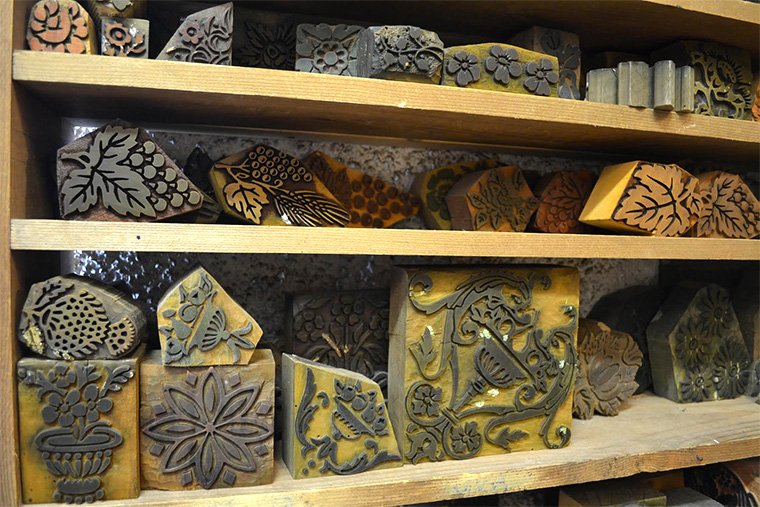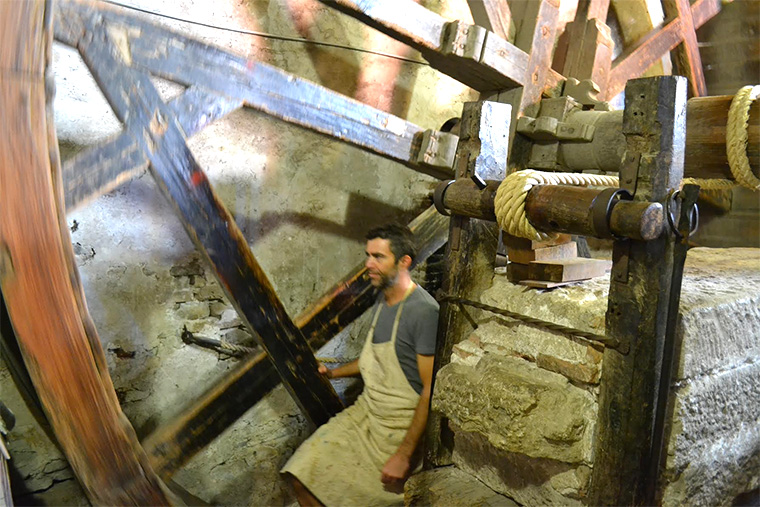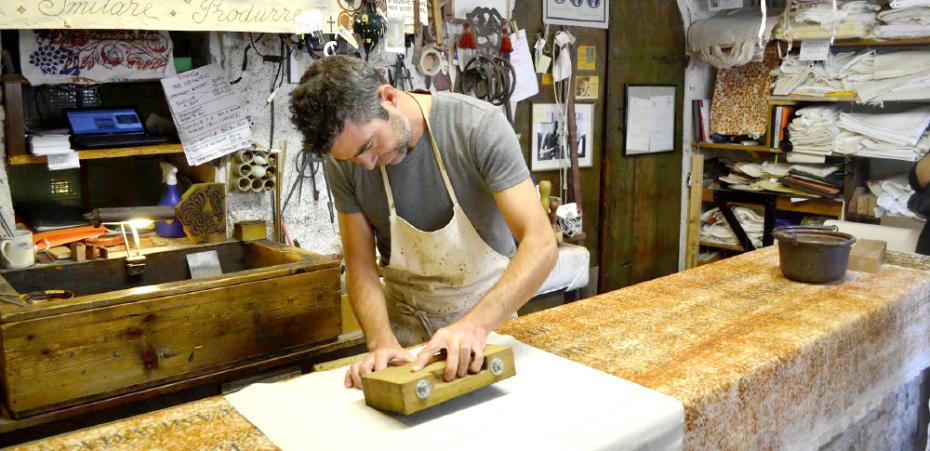Preservation and innovation: that’s the philosophy behind the work carried out by the brother-sister team at Antica Stamperia Artigiana Marchi, an artisan workshop in Sant’Arcangelo di Romagna dating to the 17th century.
From the outside, it could easily pass for a regular shop selling items for the home, but head inside and you’ll be transported back to the time when things were made by hand, with skill, patience and, not least important, loving care.
Stamperia Marchi carries on the tradition of hand printing on fabric, a decorative folk art typical of the region of Romagna in central Italy, where the workshop was founded in 1633; at the same time, the two siblings work to improve and enrich the craft. The result is tangible: beautiful, artistic tablecloths, napkins, cushions, towels, curtains… a whole range of textiles for the home, exclusively made by hand, following the “rhythms of craftsmanship”, preferring quality over quantity.

You can watch this craftsmanship in action as Stamperia Marchi organizes guided tours upon request. When I visited, I was shown around by the owners themselves, the brother-sister team formed by Lara and Gabriele Marchi, heirs of a family business started by their great-grandfather, Sante Pracucci, known as “the dyer”, in the late 1800s.
From the shop, you step through a doorway, which is really like stepping through time, and descend a flight of stairs to find yourself in front of the enormous “mangano”, the ancient wheel in use since 1633.
The mangano, whose meaning is “machine that produces strength”, has a very important task: to press, stretch and smooth the fabric so that it is ready to be printed with colors that will truly shine. White fabric piled on shelves waiting to be pressed lies all around the room. The mangano, the only mangle of such weight and dimensions from that period still functioning, operates thanks to the balance between a wheel and a huge rock at its side. The wheel acts as a lever and moves the rock, which acts as an iron. Both weigh exactly 55 tons and, because of this perfect balance in weight, the mangano turns as soon as a person enters the wheel, as Gabriele demonstrates: his weight, interfering with the original balance, causes the rock to be lifted. Lara, in the meantime, explains the process and it is quite fascinating to think that it has all been done the same way for four centuries: the fabric is wound around rollers of wood called “subbi”; the rollers are positioned below the rock and follow the same movement of the stone, back and forth, so the fabric is “ironed” following a method called “follatura”.

The mangano is employed both before and after another essential step of the process: the printing of the fabric. When you enter the next two rooms, it does feel like being in an artisan workshop of times gone by. There are about 2,000 ancient, hand-engraved wooden molds (the rarest date from the 1400s and 1500s), used to produce antique designs recalling an ancient pastoral world: cockerels, wheat sheaves, grapes, and more. The most popular color, now as it was in the past, is ruggine, rust; other popular ones are blue, red and green. All the colors come from minerals and the natural environment and are prepared following secret ancient recipes passed down from generation to generation. This too requires skill and craftsmanship in order to give the fabric that brightness and vividness that, unlike industrial-made colored fabrics, will continue to shine with every wash rather than fade away.
Finally, the fabric is immersed in a special substance, which contributes to fix the color, making it indelible and resistant to washing.
Once you go back up to the shop with a better understanding of all the work involved in producing these fabrics, you will have realized Stamperia Marchi isn’t just another home decorating shop. These beautiful Romagna prints make for a beautiful present for a friend or for yourself, to bring home a touch of originality and tradition from the heart of Romagna.
For more information, visit http://www.stamperiamarchi.it/en































